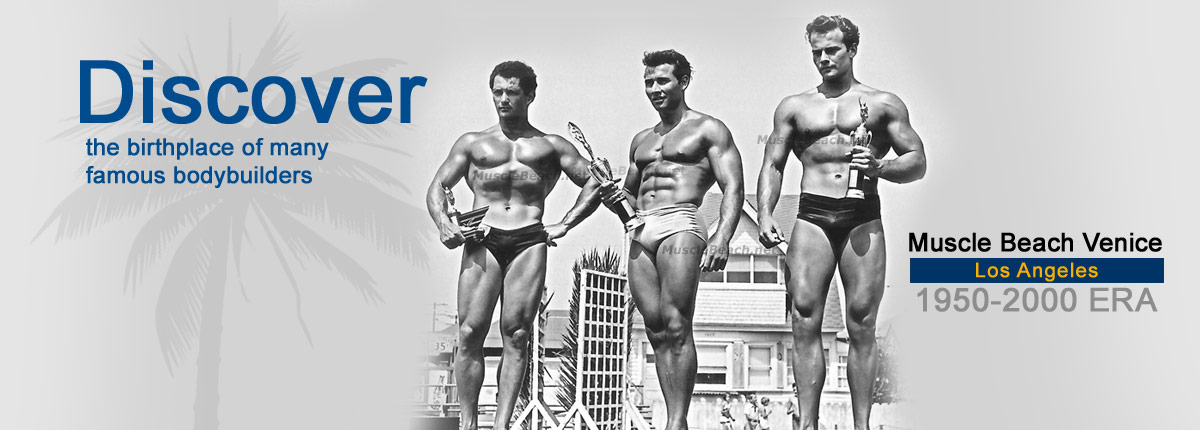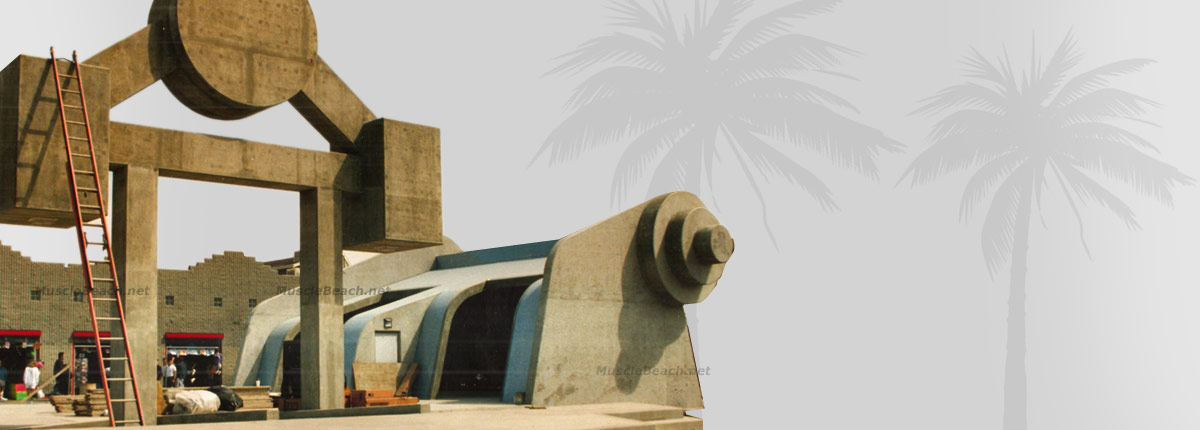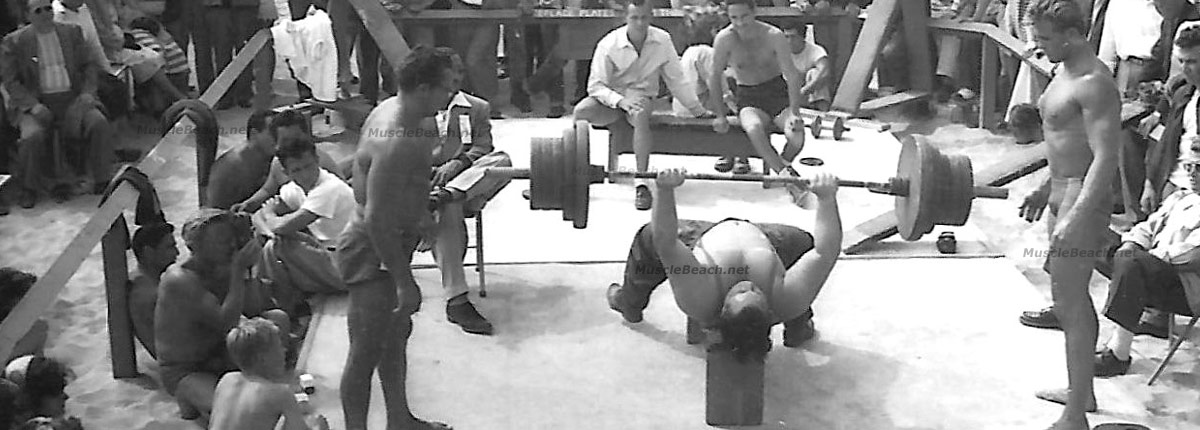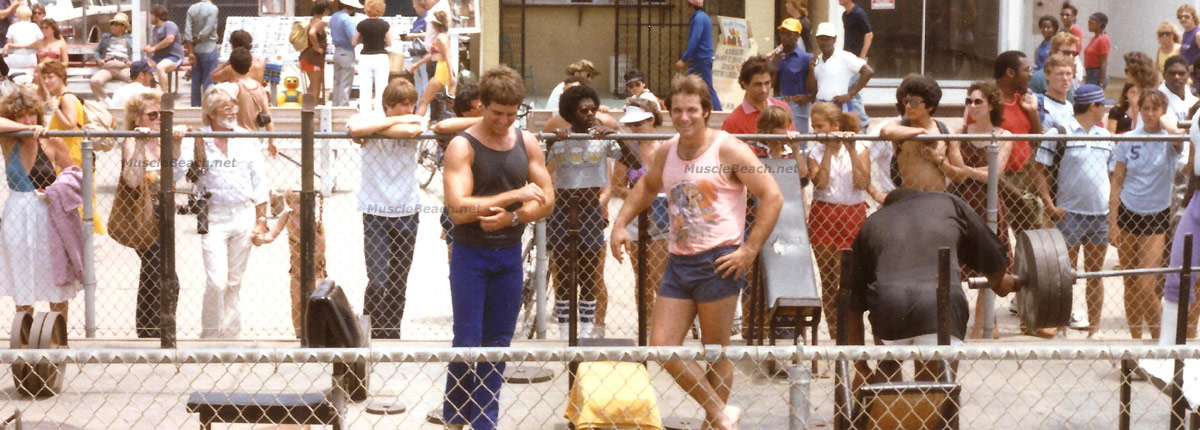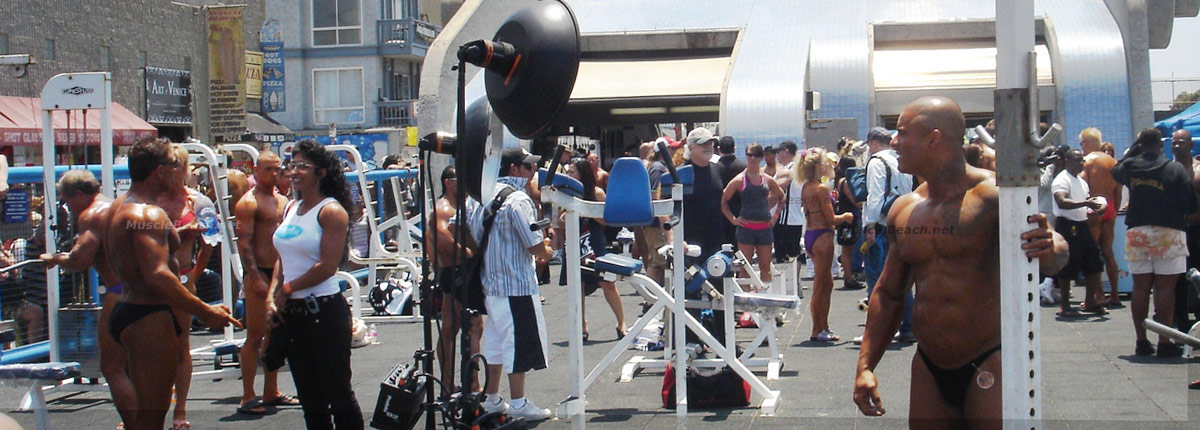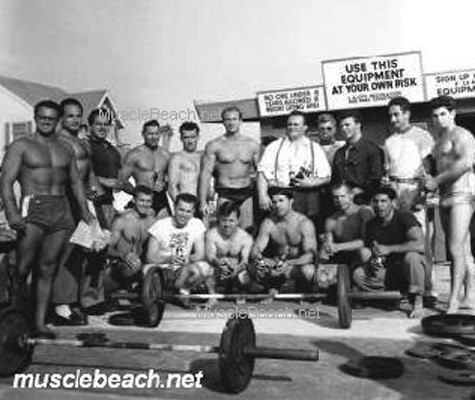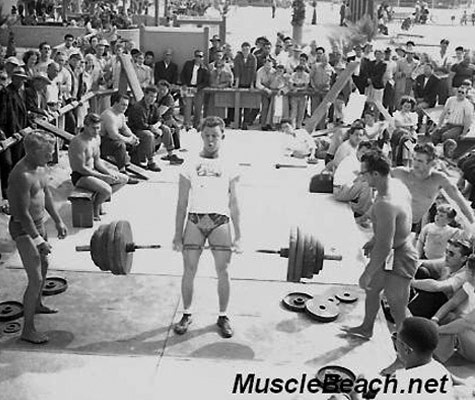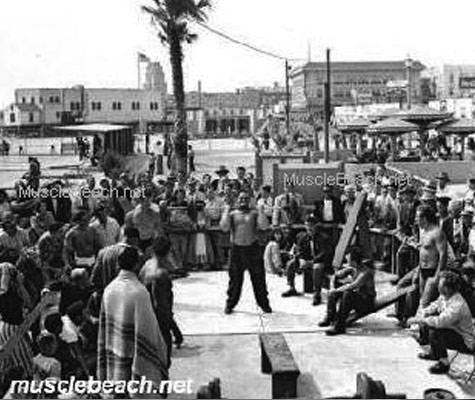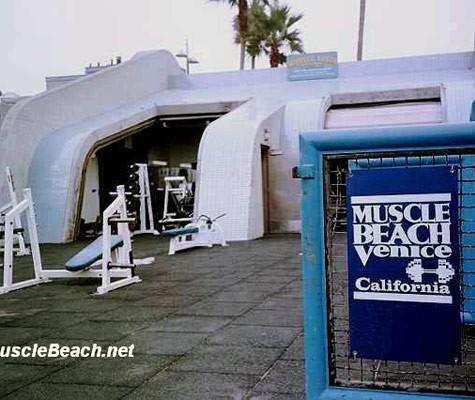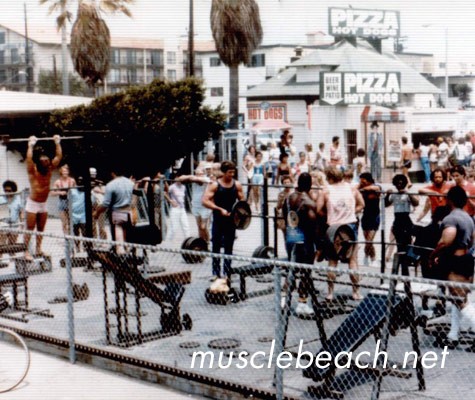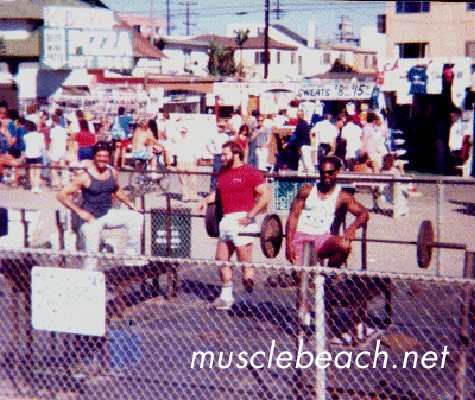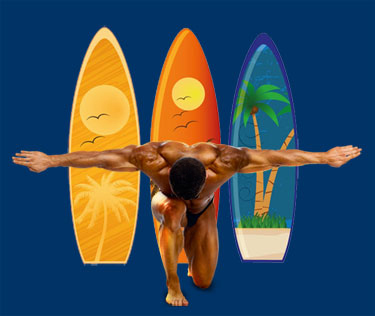Welcome to Muscle Beach – Venice
The second most famous beachfront gym The Venice Beach “Weight Pen”, arrived in 1951. It was officially dedicated as “Muscle Beach Venice” by the Los Angeles Department of Recreation & Parks in 1987. The contemporary “Muscle Beach Venice,” which is host to physical fitness buffs and tourists alike, is located at the City of Los Angeles Department of Recreation and Parks’ Venice Beach Recreation Center.
Its title “Muscle Beach Venice” distinguishes it from its predecessor and the authentic “Muscle Beach,” just more than two miles north, where the location of the original Muscle Beach has been honored and memorialized with a contemporary refurbishment and landmark sign in Santa Monica (just south of the Santa Monica Pier).
The original Muscle Beach in Santa Monica was closed in 1959 due to difficulties in the maintenance and supervision of the facility. Yet even to this day many of its patrons still frequent the actual setting of the original Muscle Beach on weekends to enjoy gymnastics as well as playing in the sea and sun.
While a new generation of gymnasts and fitness buffs congregate into the 21st Century at Muscle Beach in Santa Monica, some of the “old timers” from the golden era of Muscle Beach in the 1940s and 1950s still stop by.
The Evolution of the sibling “Muscle Beach Venice”
In about the same period that Muscle Beach in Santa Monica was originally removed from the Santa Monica beach for several decades of the 1960s into the 1980s, a less prominent facility in the neighboring community of Venice was hosting a small group of weightlifters. Owned and operated by the city of Los Angeles, “The Pen”, as it was known in the 1950s and 1960s, was the natural heir to the weightlifting and physique-development activities that had discontinued at the actual Muscle Beach in Santa Monica.
Through the 1960s and 1970s, both tourists and local residents alike began to refer to the Venice “Weight Pen” as California’s existing “Muscle Beach” — mostly unaware that for more than 25 years, the actual world-famous name and reputation of Muscle Beach name referred only to the earlier Santa Monica location.
Among other reasons for this salute to authenticity of the original Muscle Beach is that the international popularity of the name can mainly be attributed to celebrated athletes who trained and became stars due only to their fame associated with Santa Monica’s “Muscle Beach”. These athletes trained exclusively at the original Muscle Beach and didn’t earn their fame at the location of today’s “Muscle Beach Venice”.
While the Venice Weight Pen was not the actual location of “Muscle Beach,” during the decades between the 1960s and the 1980s while Santa Monica had removed the sign and fitness equipment related to Muscle Beach, the the public and tourists simply enjoyed the easy acceptance the Venice location inheriting the title ‘Muscle Beach’ — while genuine fitness and physical culture “insiders” knew that there was only one site — not “two” Muscle Beaches — and the site that is the authentic and original Muscle Beach and is in Santa Monica.
While the original Muscle Beach in Santa Monica faced a time when the City of Santa Monica removed the weightlifting and gymnastics platforms from the beach – in 1959 – the regular athletes continued the Muscle Beach gymnastics activities at the setting. A lawn area adjacent to the beach served as a natural venue for the continued world-class adagio and gymnastics training and performances. These activities continued from that time in 1959 without interruption all the way up to 1989, when the City of Santa Monica elected to restore the original Muscle Beach site and again spotlight the official ‘Muscle Beach’ name for locals and international tourists alike.
History behind the Muscle Beach Venice Name…
Additionally, in much the same way as Jack LaLanne and Steve “Hercules” Reeves were exclusively related only to the original Muscle Beach in Santa Monica, the later arrival of a sibling outdoor weightlifting platform, originally known as the Los Angeles Recreation and Parks “Weightlifting Pen” or “Weightlifting Pit” occurred in 1951. Even though people wanted to think that the Venice Weight Pen was the actual Muscle Beach, the leading original pioneers of fitness viewed the use of “Muscle Beach” for Venice a unfortunate confusion for the public that outsiders and later-arriving individuals allowed to continue.
Through the initiative of a volunteer committee of regular members of the Venice Weight Pit, led by a weightlifter named Joe Mack, a.k.a. “The Mayor,” the City of Los Angeles responded to a partnership proposal motivated exclusively by honor. In 1986, the Weightlifting Pit members and the city officials agreed to pursue an outcome to distinguish the Venice Weight Pen from continuing to be misperceived as ‘the’ actual and original “Muscle Beach.”
Archived Reference Documents:
The City of Los Angeles Recreation and Parks official, Dolores Averill, told the Venice Pit weightlifters that before she could accept a proposal to use the words “Muscle Beach Venice,” (which included the word “Venice” to distinguish it from the original ‘Muscle Beach’ in Santa Monica), she would require a letter from a leading member of the original Muscle Beach in Santa Monica approving the proposal. The volunteers contacted Armand Tanny, leading weightlifter and former “Mr. USA” who was also an original insider and celebratred member of Muscle Beach in Santa Monica. Mr. Tanny’s letter noted that he saw the City of Los Angeles including the word “Venice” in the name to help distinguish the two locations and expressed his trust in the endorsement.
The careful salute to the rich and worthy heritage of the one and only “Muscle Beach” in Santa Monica also included discussions and partnership collaboration between the volunteer members and contacts from the City of Los Angeles to work together to upgrade the then-aged weight-training platform in Venice. In a dramatic step that helped fuel the momentum of the efforts, the committee contacted Arnold Schwarzenegger who then also provided a letter of endorsement to the City of Los Angeles Recreation and Parks Department to reinforce the success ahead — which it did.

